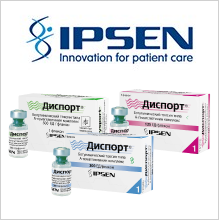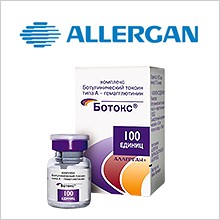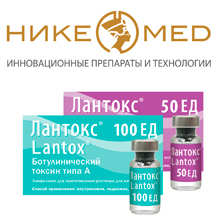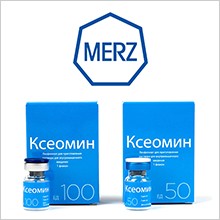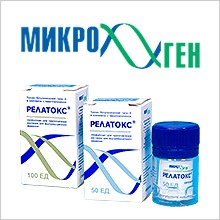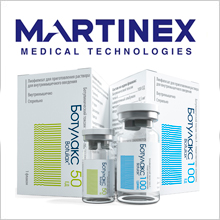Библиотека специалиста
Прошедшие Статьи
n|a
Ботулинотерапия - 20 лет в России
Статья о ботулинотерапии в российской медицинской практике опубликована в четвертом номере журнала KOSMETIK international.
Это первый в России журнал о косметологии и эстетической медицине, издающийся с 1995г. В 2015г. журнал отметит юбилейную дату - 20 лет со дня основания.
KOSMETIK international распространяется не только на территории России. Среди читателей немало и зарубежных подписчиков. Как один из самых крупных тематических журналов сфере науки о красоте, KOSMETIK international внес немалый вклад в развитие ботулинотерапии в России.
n|a
Вестник МООСБТ
Ежеквартальное информационно-образовательное издание «Вестник ботулинотерапии МООСБТ».
n|a
Neurostimulation for Neck Pain and Headache
Patients with medically refractory headache disorders are a rare and challenging-to-treat group. The introduction of peripheral neurostimulation (PNS) has offered a new avenue of treatment for patients who are appropriate surgical candidates. The utility of PNS for headache management is actively debated. Preliminary reports suggested that 60–80% of patients with chronic headache who have failed maximum medical therapy respond to PNS. However, complications rates for PNS are high.
n|a
Современные представления о терапии мимических морщин препаратом препаратом Диспорт®
Материалы Консенсуса Международного экспертного совета с комментариями членов Российского экспертного совета.
n|a
Вестник МООСБТ
Ежеквартальное информационно-образовательное издание «Вестник ботулинотерапии МООСБТ».
n|a
Measuring the potency labelling of onabotulinumtoxinA (Botox) and incobotulinumtoxinA (Xeomin) in an LD50 assay (ENG)
The biological potency of botulinum toxin (BT) drugs is determined by a standardised LD50 assay. However, the potency labelling varies vary amongst different BT drugs. One reason for this may be differences in the LD50 assays applied. When five unexpired batches of onabotulinumtoxinA (Botox(®)) and incobotulinumtoxinA (Xeomin(®)) are compared in the Xeomin(®) batch release assay, the potency variability of both BT drugs fell within the range allowed by the European Pharmacopoiea. Statistical analyses failed to detect differences in the potency labelling of both products.
n|a
Content of Botulinum Neurotoxin in Botox/Vistabel, Dysport/Azzalure , and Xeomin/Bocouturen (ENG)
To determine the amount of BoNT/A protein present in pharmaceutical preparations of Botox®, Dysport®, and Xeomin®, which are identical with Vistabel®, Azzalure®, and Bocouture®, respectively.
n|a
Stability of botulinum neurotoxin type A, devoid of complexing proteins (ENG)
Botulinum toxin type A is a complex composed of the biologically active neurotoxin, several hemagglutinins and other nontoxic proteins. After intramuscular injection these complexing proteins do not have any therapeutic effect. However, they protect the neurotoxin from harsh environmental conditions, e.g., low intragastral pH after oral ingestion. NT201, a BoNT/A drug product devoid of complexing proteins was tested in real-time and accelerated stability studies. NT201 was found to be stable without refrigeration for 48 months and even not affected by short-term temperature stress up to 60°C, demonstrating that complexing proteins are not required for the stability of BoNT/A preparations.
n|a
A new treatment for focal dystonias: incobotulinumtoxinA (Xeomin®), a botulinum neurotoxin type A free from complexing proteins (ENG)
These studies have also suggested that incobotulinumtoxinA is associated with a lower risk for stimulating antibody formation than onabotulinumtoxinA. In phase 3 noninferiority trials, incobotulinumtoxinA demonstrated significant improvements in CD and BSP symptoms in both primary and secondary measures, compared with baseline, and met criteria for noninferiority versus onabotulinumtoxinA. In placebo-controlled trials, incobotulinumtoxinA also significantly improved the symptoms of CD and BSP, with robust outcomes in both primary and secondary measures. The use of incobotulinumtoxinA has been well tolerated in all trials, with an adverse event profile similar to that of onabotulinumtoxinA.
n|a
Safety and efficacy of botulinum toxin type A (NT 201-Xeomin) for the treatment of post-stroke lower limb spasticity: a prospective open-label study (ENG)
In recent years, NT 201, a new botulinum toxin type A (BTX-A) free of complexing proteins, has been used for treating several movement disorders, showing safety and efficacy in upper limb spasticity.To assess the safety and evaluate the effects of BTX-A NT 201 free from complexing proteins for the treatment of post-stroke lower limb spasticity evaluating spasticity grade, passive ankle dorsi-flexion motion, and muscle's spasms, as well as its efficacy and rate of satisfaction for patients and for the physicians.

